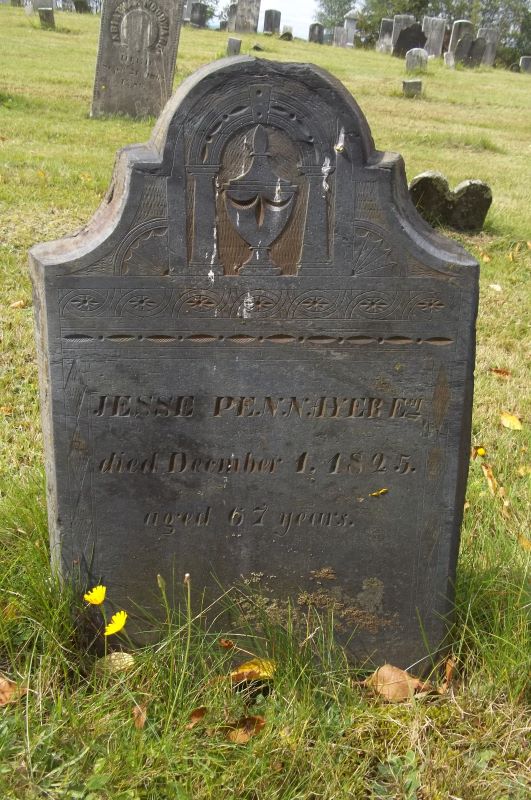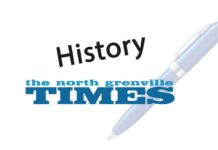Residents of North Grenville may recognise the names of some of the more important individuals who have had an impact on the community over the past two centuries, but few will have heard of Jesse Pennoyer. At the age of 30, Pennoyer arrived at the Forks, where the West and South Branches of the Rideau River meet, and began the process of surveying the boundaries of the new Township of Oxford-on-Rideau. With the addition of South Gower in 1998, Oxford became the Municipality of North Grenville.

Jesse Pennoyer has remained nothing more than a footnote in North Grenville history, but he was a remarkable man in his own right, with a colourful, and sometimes mysterious story. Born in Amenia, New York, in 1760, son of a Methodist minister, he was well-educated and when the American Revolution broke out in 1775, his family took the rebel side. At the age of 17, Jesse enlisted in the 4th New York Regiment and served for three years before his discharge. In 1777, the regiment took part in both battles at Saratoga under the overall command of General Benedict Arnold. But through two winters, the regiment suffered greatly from lack of proper winter clothing, a lack of food, and a general breakdown in morale and discipline. It was disbanded in 1780 when it was absorbed into another regiment.
What effect this all had on the young Pennoyer is not known, but a strange fact is that by 1788, after the defeat of the British and the end of the Revolution, he was living in Quebec and qualifying as a land surveyor. Precisely why he left the victorious side after the war and chose to live within British territory again is a mystery. But he prospered in his new profession, helping to lay out the townships for the Loyalist refugees who had fled to Quebec. He was also responsible for surveying the road from Cornwall to Kingston, the present-day Highway 2.
Then, in February 1791, he received instructions to leave Montreal with a survey party and go to the Forks of the Rideau to lay out a new Township to be called Oxford, for the use and benefit of certain “Gentlemen”, as the instructions call them. These were discharged militia officers and men who had lost land and property through fighting on behalf of the British Crown during the Revolution.
There is a definite irony in the fact that the rebel from the 4th New York Regiment, veteran of battles against the Loyalist militia, was engaged in setting aside land to compensate those defeated militia refugees in Upper Canada. But, wherever his previous loyalties may have been, Jesse Pennoyer was quite prepared to benefit from his new allegiance. Having been commissioned to survey a number of townships in Lower Canada, it has been said that it is unlikely that any other man explored more of the Eastern Townships than Jesse Pennoyer. He received land grants in Saint-Armand seigneury, later becoming a land commissioner authorised to assign lands to new settlers at Missisquoi Bay. Records indicate that he used this position to acquire some of the best lands for himself.
Pennoyer’s subsequent career was a fascinating mix of official positions and rebellious activism. He was a Justice of the Peace in the Montreal District between 1797 and 1800, and for the district of Trois-Rivières in 1811, 1815, and 1821. In 1802, he received a grant of 1,200 acres in Compton Township, where there are falls and a road, which he campaigned for and surveyed, and which were named after him.
During the War of 1812, Pennoyer found himself in opposition to his one-time colleagues, becoming a Captain in the Eastern Townships militia, and became Commanding Officer of the 5th Townships Militia Battalion. His battalion was known for its reluctance to serve outside its own township, and Pennoyer was often in trouble with his superiors for the conduct of his men. He remained a serving officer until 1821. He also remained an active surveyor and appears to have been responsible for the survey of the village of Sherbrooke in 1824.
An interesting parallel is that his survey of Oxford was the starting point for later surveys of surrounding townships. The same was true of his Eastern Townships surveys, which started from his survey of the seigneurie at Saint-Armand. Jesse Pennoyer had a busy and active career in surveying, local politics, and business affairs. His biography notes that: “The maps and measurements begun in 1792, and continued in 1802 and 1804, by Jesse Pennoyer were deposited officially in due course. That body of work formed part of the Primitive Cadastre (for the Eastern Townships) of Quebec and, as such, remained in effect until 1887, when the present Official Cadastre was deposited, which is the basis for land transactions to this day”. A footnote in North Grenville, perhaps, but a significant figure elsewhere. He died in December 1825.







